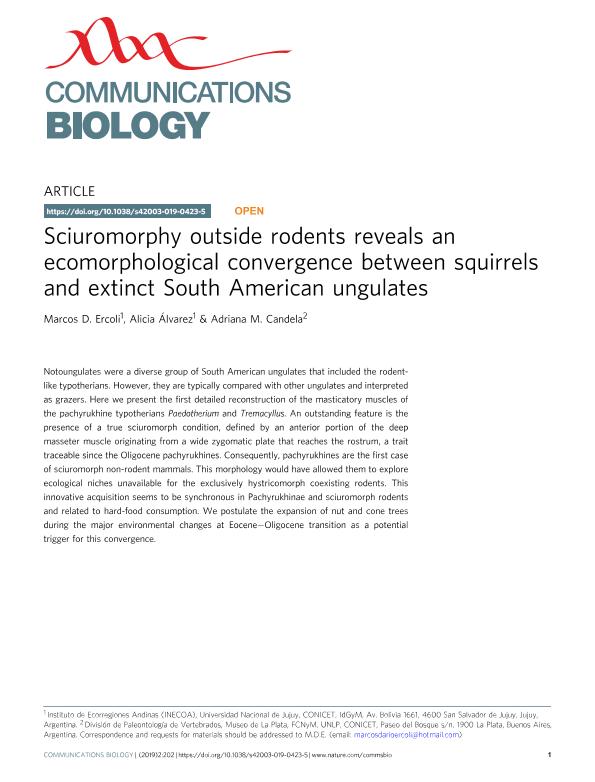Artículo
Sciuromorphy outside rodents reveals an ecomorphological convergence between squirrels and extinct South American ungulates
Fecha de publicación:
06/2019
Editorial:
Nature Publishing Group
Revista:
Communications Biology
ISSN:
2399-3642
Idioma:
Inglés
Tipo de recurso:
Artículo publicado
Clasificación temática:
Resumen
Notoungulates were a diverse group of South American ungulates that included the rodent-like typotherians. However, they are typically compared with other ungulates and interpreted as grazers. Here we present the first detailed reconstruction of the masticatory muscles of the pachyrukhine typotherians Paedotherium and Tremacyllus. An outstanding feature is the presence of a true sciuromorph condition, defined by an anterior portion of the deep masseter muscle originating from a wide zygomatic plate that reaches the rostrum, a trait traceable since the Oligocene pachyrukhines. Consequently, pachyrukhines are the first case of sciuromorph non-rodent mammals. This morphology would have allowed them to explore ecological niches unavailable for the exclusively hystricomorph coexisting rodents. This innovative acquisition seems to be synchronous in Pachyrukhinae and sciuromorph rodents and related to hard-food consumption. We postulate the expansion of nut and cone trees during the major environmental changes at Eocene−Oligocene transition as a potential trigger for this convergence.
Archivos asociados
Licencia
Identificadores
Colecciones
Articulos(INECOA)
Articulos de INSTITUTO DE ECORREGIONES ANDINAS
Articulos de INSTITUTO DE ECORREGIONES ANDINAS
Citación
Ercoli, Marcos Darío; Alvarez, Alicia; Candela, Adriana Magdalena; Sciuromorphy outside rodents reveals an ecomorphological convergence between squirrels and extinct South American ungulates; Nature Publishing Group; Communications Biology; 2; 202; 6-2019; 1-11
Compartir
Altmétricas




